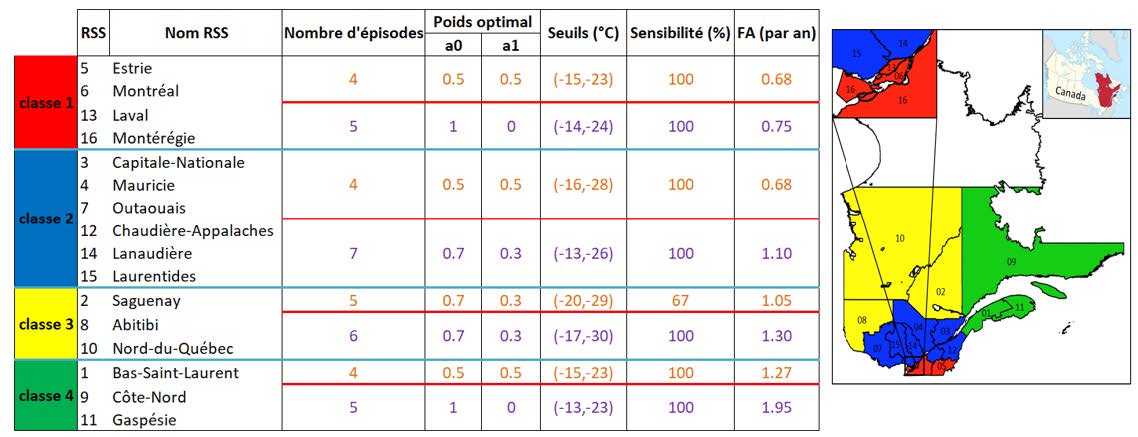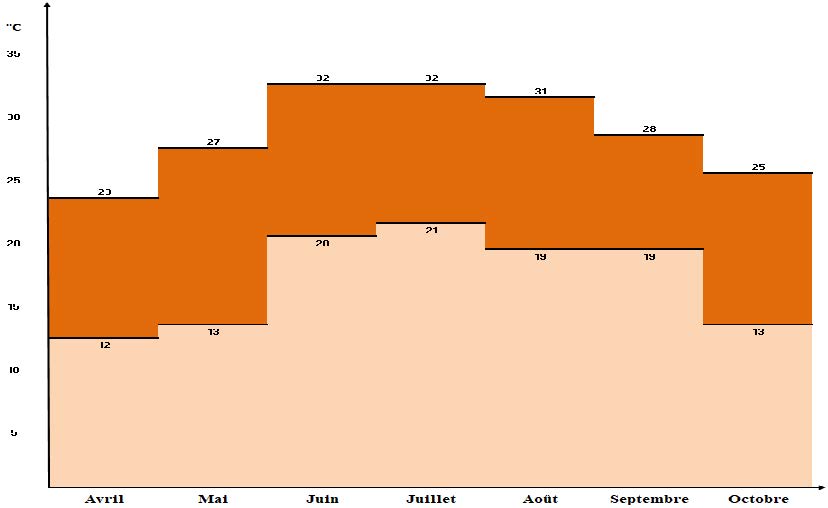Study of health vulnerabilities to extreme weather events and development of alert thresholds for Québec
This projet will help refining the development of meteorological thresholds for health alerts for several situations of extreme importance for health-related climate change adaptation, for Québec and Canada.
Project details
Principal(s) investigator(s)


Context
The relationship between meteorological variables and mortality or morbidity is specific to a geographic region, a health variable (e.g. death, hospitalization, specific diseases) or meteorological variables. In Québec, the alert thresholds for the SUPREME system, initially developed for heat and all-cause mortality, must now be adapted for other specific health impacts that may be linked to meteorological phenomena such as ice storms, summer and winter storms, etc.
In order to do so, the relationships between meteorological variables (or certain natural hazards arising from them) and diseases must first be studied. The relationship between climate and cardiovascular disease is known in Québec, but the relationships with other health issues, including injuries (e.g. fractures caused by falls) and gastro-intestinal and respiratory diseases, remain to be characterized.
Objective(s)
Refine the development of meteorological thresholds for health alerts for several situations of extreme importance for health-related climate change adaptation, for Québec and Canada.
Methodology
-
Reproduce the threshold calculation methodology already developed by INSPQ for episodes of extreme cold and other health risks.
-
Explore the relationship between climate and health for Québec and Ontario, using new modelling and calculation methodologies.
-
Apply the chosen methodology, if conclusive, to the calculation of threshold indicators for heat and other relevant health risks.
Results
For Objective I:
The methodology already used for extreme heat alert thresholds also works for:
-
Cold (hospitalizations and mortalities from all causes - Figure 1; [2]), and its performance is good (sensitivity and number of false alarms generated).

Figure 1 : Cold thresholds (maximum and minimum temp.) related to overhospitalizations (purple) or excess mortality (orange) by health region.
-
Air pollution, both in summer (e.g., 31 μg/m3 for PM2.5 and 43 ppb for Ox2 in Montreal) and winter (e.g., 25 μg/m3 and 26 ppb in Montreal) [3]. These results are comparable to the various existing air quality recommendations, but are better adapted to the populations and cities studied.
-
The change in heat during the summer (changing according to the month - Figure 2; [4]). These thresholds take into account seasonality and monthly temperature variability over an extended summer season (April to October), as observed in the context of climate change.

Figure 2 : Changing alert thresholds for heat (maximum and minimum temp.) related to excess mortality in the Greater Montreal area.
For Objective II:
To create indicators, the CGAIM constrained model was developed for heat and air quality health alerts [5]. This model makes it possible to create meaningful and more robust indices (grouping of several indicators).
To determine thresholds, several methods are promising, including machine learning methods like model-based recursive partitioning (MOB), multivariate adaptive regression splines (MARS), the patient rule-induction method (PRIM) and adaptive index models (AIM) [6]. These methods are more effective (particularly PRIM) in predicting days of excess mortality due to heat than current thresholds (methodology in I) and the standard methods in the literature.
Recommendations
-
Consider applying these approaches in other cities or regions in Canada.
-
Combine the new approaches developed with other environmental or health variables, such as adaptable thresholds for cold or machine learning thresholds for air pollution.
-
Study the future behaviour of the current heat alert system, or new systems, considering different climate change scenarios.
Benefits for adaptation
Benefits for adaptation
These results could lead to the integration of cold and air pollution into Quebec’s health alert system. It could also be adapted to introduce monthly heat thresholds.
Since the thresholds developed are based on historical data, these thresholds should be updated every 5-10 years to take into account climate change, demographic change and climate adaptation in public health and the health care system.
Although climate projections predict fewer cold temperatures and extreme cold snaps, the health impacts of medium and extreme cold are an increasing public health concern. With winters being increasingly wet and temperate, the population will be less and less ready to handle them, especially in a context of increasing social inequalities and more people experiencing homelessness.
With the increase in road transport despite greenhouse gas reduction measures and the expected increase in forest fire smoke episodes, air pollution alert thresholds for the health of the population are particularly important, especially since the literature shows a link between heat and air quality impacts.
The methodology development carried out, particularly the CGAIM, could be used for several adaptation contexts, such as multivariate epidemiological studies.
Scientific publications
Other participants
Santé Canada
Funding
This project is funded by the Québec government and meets the objectives of the 2030 Plan for a Green Economy.
